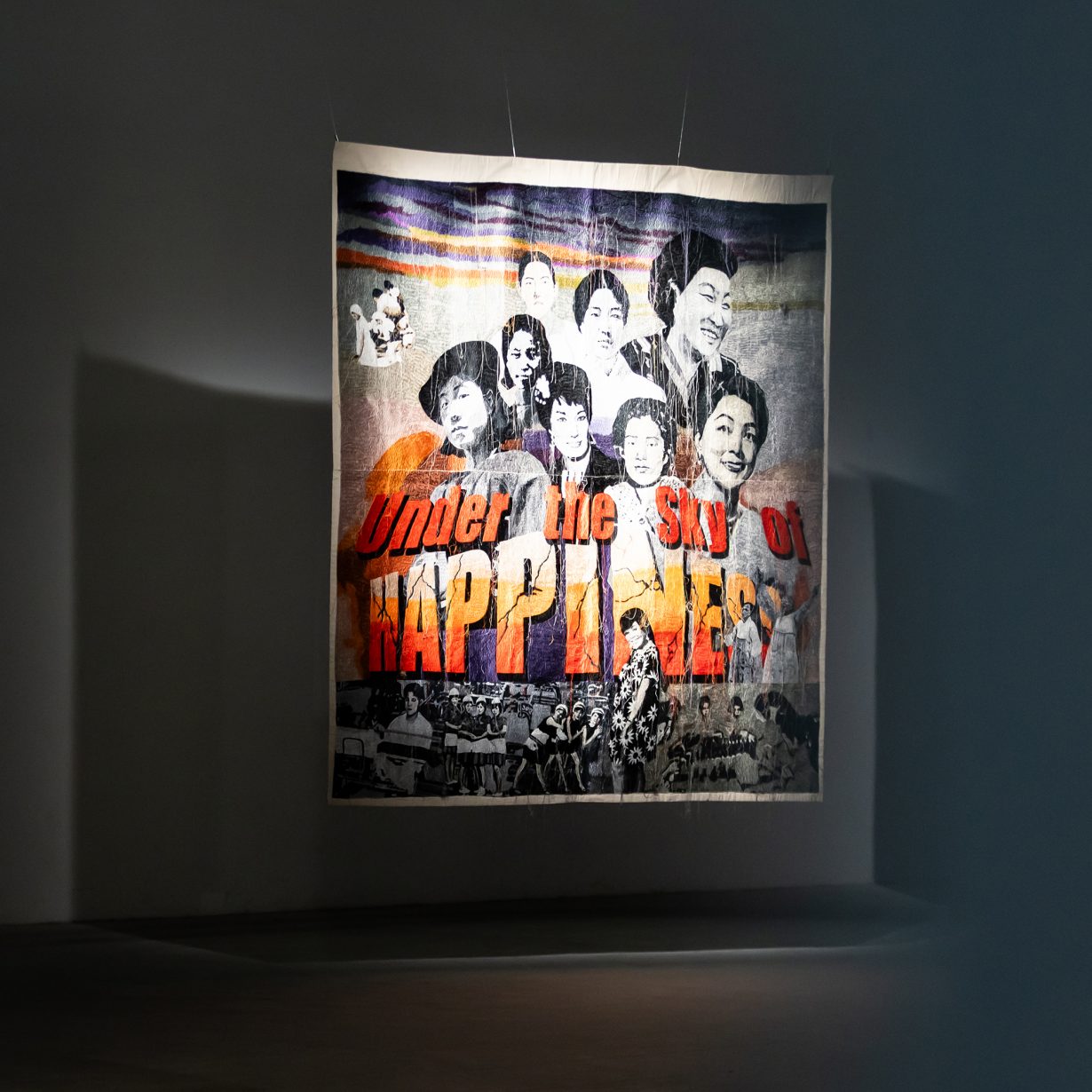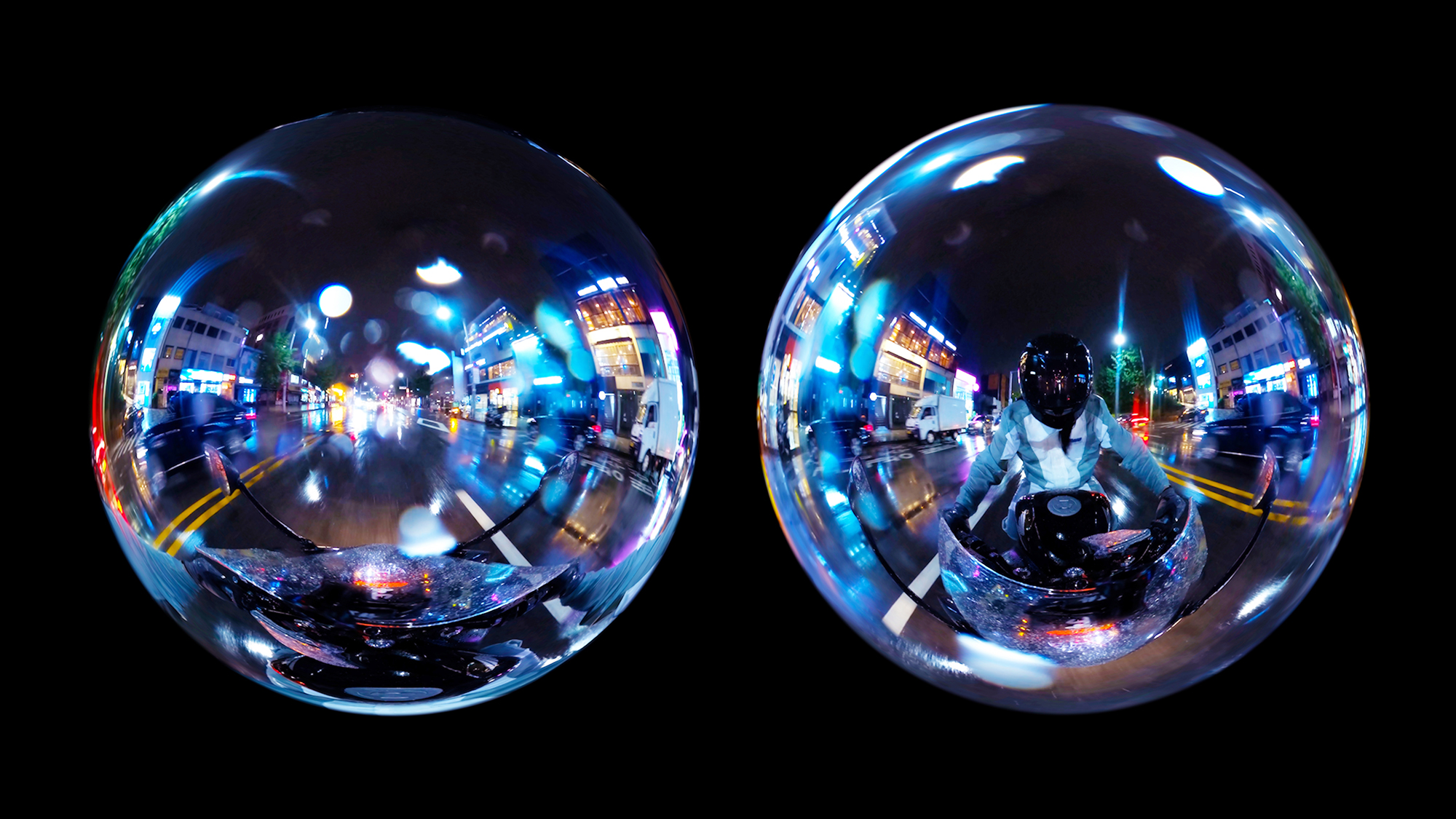‘Body’, ‘Society’, ‘Space’ – they’re all mediums, according to a new show at Manarat Al Saadiyat, Abu Dhabi
This exhibition comprises 48 works by 29 Korean artists from the collection of Seoul Museum of Art. ‘We are in open circuits’ is, according to the exhibition text, a Nam June Paik quote from 1965: a tumultuous time in South Korea’s history, during Park Chung-hee’s military regime. That era also witnessed the popularisation of satellite TV, which in turn gave artists both source material and a tool to reflect on society and culture, and it’s with Paik and the generation of artists who engaged with the emerging video medium during a time of social change that this exhibition begins.
In the exhibition’s first section, ‘Open(ing) Circuits’, Nam’s famous installation Moon is the Oldest TV-1965-1967 (1996) – in which he inserted magnets into the tubes of 12 TV sets to create what look like waxing and waning moon-phases on their screens – sits across from photographs of Park Hyunki’s performance Video Inclining Water (1979). This series shows Park holding and rocking a chunky CRT TV screen in his hands; its screen shows a video of water that appears to splash and sway within the frame, as if moved by the artist’s motions. Both Nam and Park’s works reflect on representation and its material basis, as well as the relationship between illusion and reality, which then sets up an examination, through the show as a whole, of mediation itself.
In what follows, these ideas are made physical: loosely mapped onto bodies (human or otherwise), society and our built environment via three sections: ‘Body as Medium’, ‘Society as Medium’ and ‘Space as Medium’. Although the extent to which these themes are clearly delineated or mutually exclusive is questionable. ‘Body as medium’, for example, gestures towards the body as a site of perception and inspection. Hyejoo Jun’s The Birth of a New Flower (2023–24) is a two-channel video essay that examines how plants are objects of design in today’s botanical industry. The work traces various flowering plants’ journeys from production lines in factories and warehouses through to their distribution across geographical regions. The video is accompanied by a series of printed images of speculative flower species mounted on a large lightbox, as if they were specimens in a botanist’s archive. But Jun moves beyond the scientist’s anatomical attention to embed these plants within a network of socioeconomic relations.

The idea of ‘Society as Medium’, by contrast, is less intuitive. The section broadly refers to ‘social worlds’ as ‘complex processes of translation and historical interpretation’. An emblematic example is Under the Sky of Happiness (2013) by Young In Hong, an embroidered tapestry hung from the ceiling. Spanning nearly three metres, the monumental work is composed like a movie poster (specifically, that promoting the 1974 film Under the Sky of Sakhalin), with headshots of Korean women (including, we’re told by the wall text, painter Na Hye-sŏk and lawyer-activist Lee Tai-young) over the title. Here the artist reverses the gender of the male protagonists of the original film to offer a commentary on media culture and its privileging of a male-centred history and nationhood.
While the term ‘open circuit’ evokes ideas of an ‘interconnected world’ in which, according to the exhibition text, ‘meaning flows through’, in electronics it refers to an electrical circuit that is broken and through which a current cannot flow. This layer of irony is echoed in Ayoung Kim’s videogame Delivery Dancer Simulation and video Delivery Dancer’s Sphere (both 2022) in the last section of the show. Kim’s video imagines the journey of a courier in a hyperconnected world, whose day is managed minute by minute as she navigates a deserted urban landscape filled with physical and logistical obstructions that interrupt her progress. In the videogame, navigating space becomes both the method and content of a first-person deliverer’s labour – the player stuck in an urban labyrinth, recreating the pragmatic, meaningless experience in which all one can do is to find one’s way from one point to another without purpose or end goal. Compared to other works here, these offer a more convincing example of space as a medium, onto which time, speed and the value of one’s labour is mapped. And while this show seems primarily a loose exercise in state-sponsored soft power, it’s these works that seem to connect the show as much to Abu Dhabi as to Korea. In the desert-city’s sprawling landscape, the 40 degree heat makes moving through space a daunting task. I travelled to and from the exhibition in cars; the only people I saw outside were delivery drivers on motorcycles, their T-shirts billowing as they roamed the highways. We circulate, the work seems to suggest, without knowing how to stop.
Layered Medium: We Are in Open Circuits at Manarat Al Saadiyat, Abu Dhabi, 16 May – 30 June
From the Summer 2025 issue of ArtReview Asia – get your copy.
